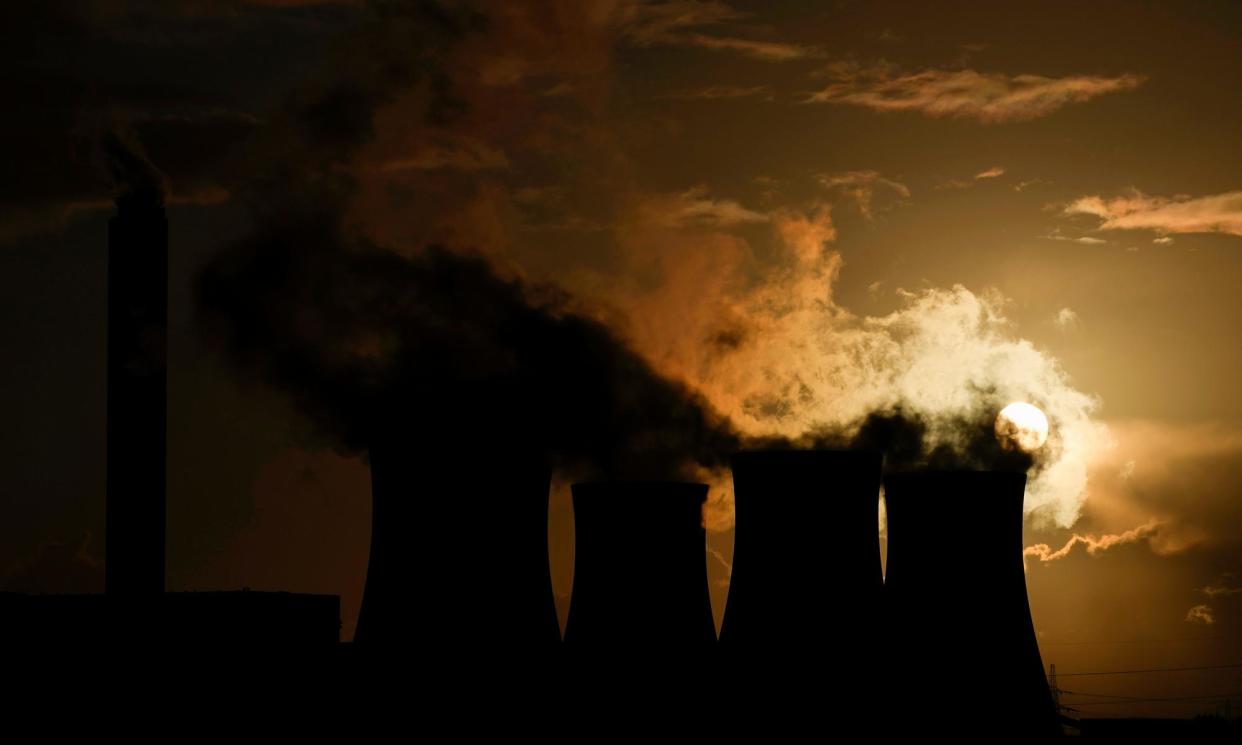UK’s methane hotspots include landfills and last coalmine

The UK’s worst methane hotspots include the last coalmine, livestock farm clusters, landfills, power plants and North Sea oil and gas wells, according to an analysis.
The process has also thrown up serious doubts over the UK’s ability to calculate its methane emissions.
The Guardian and Watershed Investigations analysed official methane emissions data from the National Atmospheric Emissions Inventory (NAEI) along with information on the Watershed pollution map to identify Britain’s methane hotspots.
Top of the list was a site near Glynneath in Wales, home to the Aberpergwm colliery, the UK’s last coalmine. Next was Selby, the location of industry including Drax power station, as well as a number of old landfills and farmland. The top 10 also includes power stations, oilwells and Slough trading estate, home to a wide range of industry.
In Northern Ireland, the sites with the highest emissions are in areas near landfills and farms. Using livestock figures, the analysis also found a strong correlation between methane emissions and areas of the UK where high numbers of cattle are farmed for dairy or beef. These include south-west Scotland, Cumbria, Devon and south-west Wales.
Across the UK, open and historical landfills correspond with elevated methane emissions. All 100 hotspots can be seen on the Watershed pollution map.
Greenpeace’s chief scientist and policy director, Dr Doug Parr, said: “These alarming findings highlight that, despite the UK joining a global pledge to reduce methane emissions by nearly a third by 2030, a proper British action plan has yet to materialise.
“Given its potency, and the fact that it is in fact a short-lived greenhouse gas, reducing methane emissions could help rapidly slow the warming that is creating the climate crisis.
“The new government must fulfil the UK’s international promises, and has the opportunity to come up with an exemplary, internationally leading plan for tackling methane from both the energy and farming sectors.”
There is dispute over whether the NAEI figures can be relied on. The organisation says it uses a variety of “regulatory sources” and “surrogate statistics” to create its methane emissions data. One such source is a dataset that uses emissions from “large point sources” specific to industrial sites.
Drax argues that the NAEI uses models to produce emissions figures that are too high. It says they make little sense and there is a potential flaw in the modelling. The power station says a more accurate picture is its own audited submission to the Environment Agency of 79 tonnes in 2021. Any modelling flaw would affect the emissions data for all companies.
The NAEI’s modelling has also been criticised by academics, who argue it underplays the amount of methane being released.
A 2022 Royal Society of Chemistry paper suggested the NAEI “substantially underestimates leakage” due to “outdated/incorrect emission factors, incomplete activity data, and incomplete data on vented emissions”.
The authors of the paper estimate “total UK methane emissions from flaring, combustion, processing, venting, and oil and gas transfer to be … five times larger than the NAEI estimate”.
Analysis by the Green Alliance thinktank goes further. It says oil and gasfield methane emissions may be 11 times higher than reported, and in some cases could be up to 70 times higher.
“It has long been suspected that methane emissions from oil and gas operations are higher than are reported in official statistics,” said Liam Hardy, a senior policy analyst at Green Alliance. “Now the combination of better modelling and satellite data shows that things are even worse than we thought.
“New data from recently launched satellites will soon allow us to say with even greater confidence exactly which sites are underreporting. The government needs to get a handle on fugitive methane emissions, and ensure that fossil fuel companies clean up their act. The industry needs to explain why their results for methane emissions are consistently lower than independent studies calculate them to be.”
Farming, in particular, is a big contributor to the UK’s methane problem but does not report its figures and its emissions are largely diffuse.
A government spokesperson said: “Reducing methane emissions is crucial in tackling the climate and nature crisis – the greatest long-term global challenge that we face. We do not intend to issue new licences to explore new fields because they cannot make us energy secure, will not reduce bills and will only accelerate the worsening climate crisis. In addition, we will not grant new coal licences and will ban fracking for good.
“The transition to more climate friendly practices does not need to come at the expense of food production or farm profitability.”
The Department for Energy Security and Net Zero disputes the studies that question its figures but declined to comment to the Guardian.
The Climate Change Committee has said: “If the UK is to achieve [its target of] a 30% reduction in its own methane emissions, the pace of recent reductions will need to approximately double.”
The UN Environment Programme says a 45% reduction in methane by 2030 would avoid nearly 0.3C of warming by 2045. In the UK, methane represented 14% of greenhouse gas emissions in 2022, the equivalent of almost 57m tonnes of carbon dioxide.


